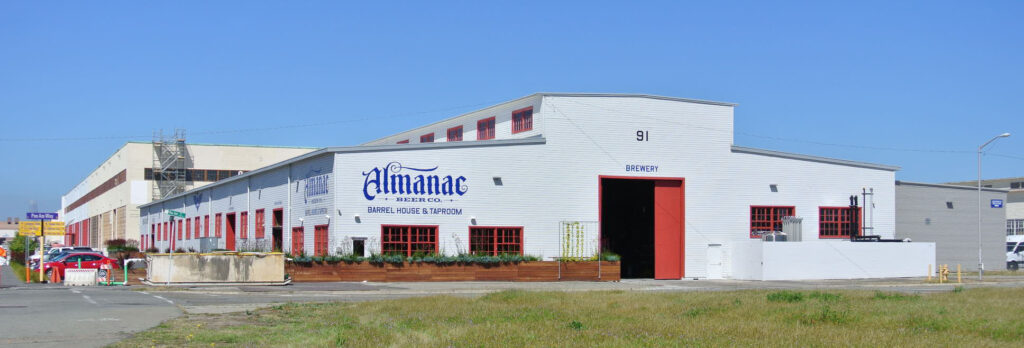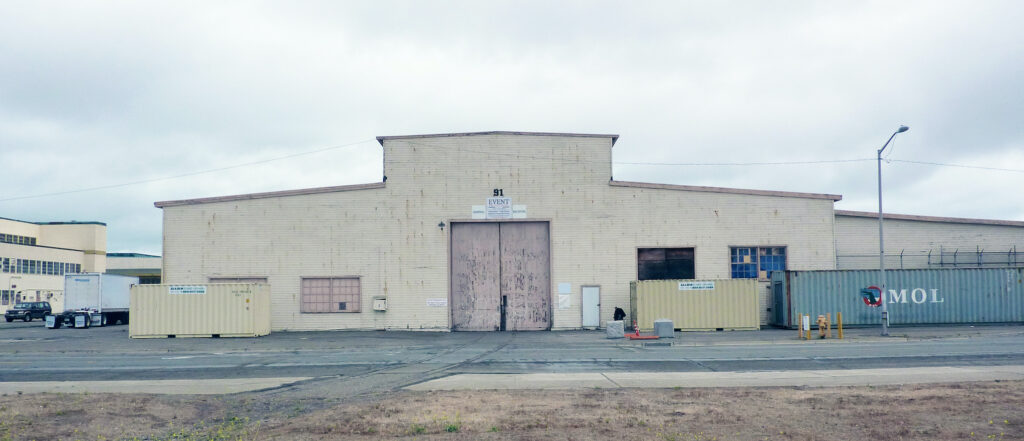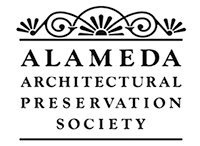
Building 91
The Beginning of NAS’ Future
Story by Jerri Holan
AP Building 91, LLC, Building Owner; srmErnst Development Partners, Developer; Forge Architects, Shell Architect; Holmes Structures, Shell Structural Engineer; Cheryl Barton ,Site Landscape Architect; McNely Construction Company, Shell and TI Contractor; Admiral Maltings, Tenant; Allied Architecture and Design; Tenant Improvement Architect; Almanac Beer Company, Tenant; SLM Architecture & Design, Tenant Improvement Architect
The Alameda Naval Air Station is a very special place in Alameda. A large part of the City’s history and development is tied to the NAS. Over the years, as it grew and expanded, it contributed much to the cultural and social affairs of the town. In 1936, the City ceded the 1927 Alameda Airport – built on the west end of the island over wetlands – to the United States Government. When the US Army discontinued operations in 1938, congressional appropriations were allocated for a naval air station here. The station played an important role during World War II and many aircraft structures and runways were built during this time.
Following the war, the station remained an important naval post. From 1949 to 1953, the Navy based the Lockheed R6V Constitution – the largest airplane ever listed on the Navy inventory – at the Alameda NAS. Construction continued, air facilities expanded, and well into the 1990s, nuclear-powered aircraft carriers were home ported at the Station. Over the years, the NAS employed thousands of military personnel and local civilians working in all facets of the aviation industry.

Alas, in 1997, the NAS closed and the US Navy has since transferred over 500 acres of property to the City of Alameda. Since 1996, the City has been planning the redevelopment of the former Naval Air Station, now known as Alameda Point. In 2013, much of the Station was placed on the National Register of Historic Places and is now one of California’s largest historic districts. Alameda Station’s most important contribution the United States was that it served as a template for the development of similar military bases across the country. Culturally, NAS’ significance is that it reflected the nation’s values and technical expertise during a major period in the nation’s history.
In July, 2017, the City of Alameda successfully sold its first NAS property for private development at Alameda Point. Within its 50,000 sf footprint, Building 91 has become a beautifully restored commercial building by the owner and developer, AP Building 91 LLC and srmErnst Development Partners. The refurbished building houses the first malting company in California since Prohibition as well as a brewery. Its transformation was a historical moment for Alameda Point – the start of creating long-term jobs, new residences, amenities, and infrastructure at the former NAS.
Originally constructed in 1944 as a machine shop to store engine parts, Building 91’s industrial character was typical of the NAS and the building is a contributor to the Historic District. Because it is the first Contributing Building to be redeveloped in the District, the City wanted the adaptive reuse project to serve as a template for future development of Alameda Point – the success of this project would influence many other similar buildings in the District.
The owners spent approximately $9 million dollars refurbishing the building. This included restoring the complete shell of the building, the roof, some
structural reinforcements, as well as tenant improvements and landscape amenities such as decks, bike racks, and planters. The project intends to take advantage of the Federal 20 Percent Historic Preservation Investment Tax Credit to assist with the improvements which means strict adherence to preservation guidelines.
According to Alameda’s Preservation Guide for the NAS Historic District, the most important character defining element of this building were its industrial sash, wood windows. Lower south side windows in bad shape were replaced with windows from the north side that were in good shape. South side clerestory windows were replaced altogether with new windows similar to the originals. Non-original windows were removed and new doors were located in existing window frames to keep the proportion and rhythm of the original warehouse. New awnings at entries were added in keeping with the District’s design guidelines and the exterior horizontal wood siding was repaired, not replaced. Finally, the building was painted with colors conforming to the Paint Guidelines for Existing Buildings in the Historic District (Nebulous White and Rave Red).
A non-historical ‘lean to’ addition at the rear of the building in poor condition was replaced with a steel storage building. The old ‘blast’ building (used by the Navy to blast components) to the east of the Building was converted into a steel trash enclosure.
In general, the original historic building has been meticulously preserved and the refurbished interiors retain the wonderful industrial character of the building.
Large wood trusses, post and beams are all exposed, a new concrete floor in a portion of the building was installed and the two tenants have sensitively adapted their businesses to the old structure. In fact, the malting company installed interior windows around their malting floor so patrons could watch the old-fashioned process while enjoying many different ales that come from it. To keep the industrial character, many materials on the interior were recycled or repurposed and some original signage was retained (e.g., the numbering of structural bays). On the exterior, address graphics complied with the Alameda Historical Advisory Board’s Way Finding Program adopted for the former NAS.
After all the work was done, Building 91 is ready for the future. Well worth the investment, the project is a wonderful asset to the community and a perfect resource for the next NAS rehabilitation projects. It’s a special building in a very special place
